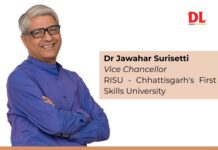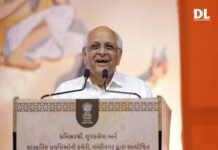
A premier educational institution invites an acclaimed academician from abroad. Students irrespective of their interest are asked to attend. The lecture hall is barely filled, many listeners do not seem to be interested in the subject. But they are there, on their own laptops and mobiles – while the academician makes a powerpoint presentation on latest trends in the subject. The content of presentation is good – though one may hold a different view, if asked. Does he teach well? Unsure. Do the participants learn? Sure – they do not.
Consider an alternate scenario. The same academician is coming. The institute invites those interested in the subject to attend. The academician makes groups of participants, starts with what they already know, what views they hold, and asks them to discuss some open questions about the subject. The groups discuss, debate and present their views. The academician comes in to clarify doubts, give examples, and share his/her view in those aspects. Does he teach well? Sure. Do the students learn? Unsure – they may.
Which scenario is better for learning?
The root cause of this confusion – and of mere focus on teaching – is that learning has come to be misunderstood as limited to formal education. Whereas learning is a daily activity, in and out of schools/colleges. Curiosity is innate in human beings, from birth. Irrespective of the structured educational system, humans learn – they learn from nature, they learn while talking to others, while observing, while doing, while solving problems, while living life. In awareness and presence, every moment is learning. ‘The whole movement of life is learning’, says J Krishnamurti.
The purpose of education – shikshan – is then facilitation and acceleration of this learning process.
While the words teaching and learning are often used together, it may be worthwhile to look at these in some detail. The word teaching has to do only with the teacher, the word learning involves both the teacher and the student.
The mindset in teaching is about ‘giving’. The teacher feels that (s)he has to ‘give’ knowledge which (s)he possesses, to a student who ‘does not’ possess it. There are problems with this argument, as there can not be (neither is it required!) one repository of complete knowledge. More importantly, it signifies lack of trust in students – that they may also know, or hold a view about something. One- way teaching mindset discourages questioning, understanding, experimenting, and is thus, detrimental to learning.
There are two other things in the formal education environment that inhibit learning. One is ‘fear’. In the name of ‘discipline’ and ‘order’ – the environment in learning spaces smells of fear. Fear of authority, fear of failure, fear of ridicule, fear of exams. Recall your most critical learnings in life – and whether they were learnt out of fear ? Fear not only inhibits learning in the present – it cripples the young mind which should actually be blooming in a fear- free environment, gaining confidence on ‘how to learn’. The fear surrounding ‘what to learn’ mars it. The teacher is stressed in ‘completing syllabus’, rather than ‘clarifying the concepts, and developing love for the subject’; the student’s sole goal is to score marks – learning can follow! Fear also breeds an inferiority complex in an individual – a fearful mind cannot be creative.
The other thing – smartly masked as ‘essential in the new world order’ – that kills learning is competition. Learning is an internal trait, while competition is an external negative factor. It is said that competition can motivate – however that motivation is temporary; moreover that comes at a great peril if missing value of collaboration and ignores that fact that real life problem solving dies not require oneupmanship but rather working together, complimenting each other’s skills. There can be only one thing uppermost in mind – that can either be the ambition to win, or the joy to learn. If my energies are directed outwardly – and negatively – in bettering than the ‘other’; then how will true internal learning (revelation!) happen. Most of us remember that the concepts that we discussed with friends – collaborative learning – are the ones that stayed longest! ‘People support what they help create’, and students are people too!
What is required therefore is a shift in the focus in from teaching to learning, from teacher to student. Four things are key for this. The first and the foremost is the relationship- between the educator and the student. What a student long remembers after leaving school/college is one teacher who understood him/her; who ‘listened’ to him/her; who did not hold any biases against him/her because of his background, caste, colour, language or socio-economic status. For whom he was not a ‘Mr. India’ – an invisible in the class. Two, the environment in the school/college has to be fear-free, where a student can ask questions, disagree with the views, and learn to respect opposite views without hatred. Three, the competitive spirit has to give way to a collaborative spirit. Learning increases by sharing. Marks are limited. Four, education sector has to purge itself of all the biases, favoritisms and partialities. It should be a place welcoming one and all. Such an environment alone will nurture holistic individuals as expected in the National Education Policy, 2020.
The shift from ‘teaching’ to ‘learning’ entails all of the above. Are our educators and education bureaucracy up for this change?
Views Expressed By: Nipun Vinayak, State Project Director, Rashtriya Uchchatar Shiksha Abhiyaan, Maharashtra, Executive Director, Maharashtra State Faculty Development Academy, CEO, Maharashtra State Commission for Higher Education & Developments.






















